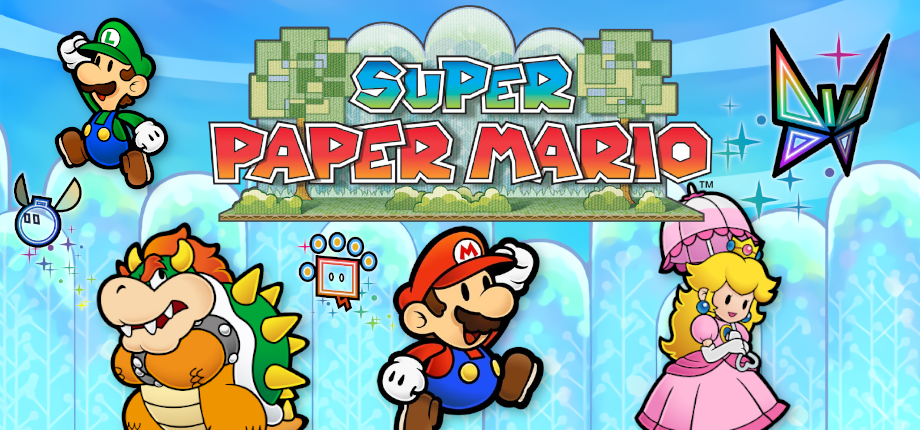
Super Paper Mario
Fan opinion of Super Paper Mario has risen since its release, but I find myself agreeing with its initial mixed reception. Previous Paper Mario games were RPGs with platforming elements, allowing mildly engaging traversal mechanics to bridge the gaps between the more interesting story and combat moments. Super inverts the formula, so now the RPG component drags down the pace of the platforming gameplay. It’s an inherently worse setup, and seemingly no thought was put into its implementation. The list of usable items is extensive and filled out with a weirdly comprehensive cooking system, but it’s also extremely redundant. In lieu of stats to upgrade or equipment to improve, there’s an unreliable card-collecting system that allows you to do more damage against specific enemies. The platforming is technically sound – collisions especially have satisfying bounce to them – but it’s nowhere near the standards of the parent franchise.
In general, the game doesn’t seem to realize how simplistic its own gameplay is. Traditional Mario boss battles require landing a hit three times, because that’s an ideal length when you only have a couple of actions to work with. But SPM is structured like an RPG, so its bosses require 10-20 hits even though they never evolve beyond “use one of your partners’ abilities, then jump on the enemy’s head.” Similarly, the level layouts are also RPG-like, even though 2D side-scrolling is an inefficient way of navigating them. These are both representative of the game being chronically disrespectful of the player’s time, most blatantly in a number of infamous moments of padding where you’re asked to perform the same task over and over again.
Everything I’ve heard about SPM’s follow-ups indicates that they’re poorly-designed games using the Paper Mario aesthetic to tell a by-the-numbers Mario story. SPM gets away with a merely mixed opinion, because while it’s certainly poorly-designed, it’s undoubtedly a Paper Mario game. The series hallmarks of terrific writing and off-the-wall comedy are intact, and the individual chapters memorably feature things like the Mario universe equivalent of hell and a caricature of otaku culture as a minor antagonist. The primary antagonist is also fantastic, though that takes a long time to become apparent; prior to that point, the overarching story is a simplistic light-vs-dark affair. In all other aspects, the game is full of ideas. The big gameplay one is the ability to switch between 2D side-scrolling perspective and a Crash Bandicoot-style 3D perspective. While it doesn’t always make for the most convenient level design, the number of creative ways it’s used is very impressive, especially in a pre-FEZ world.